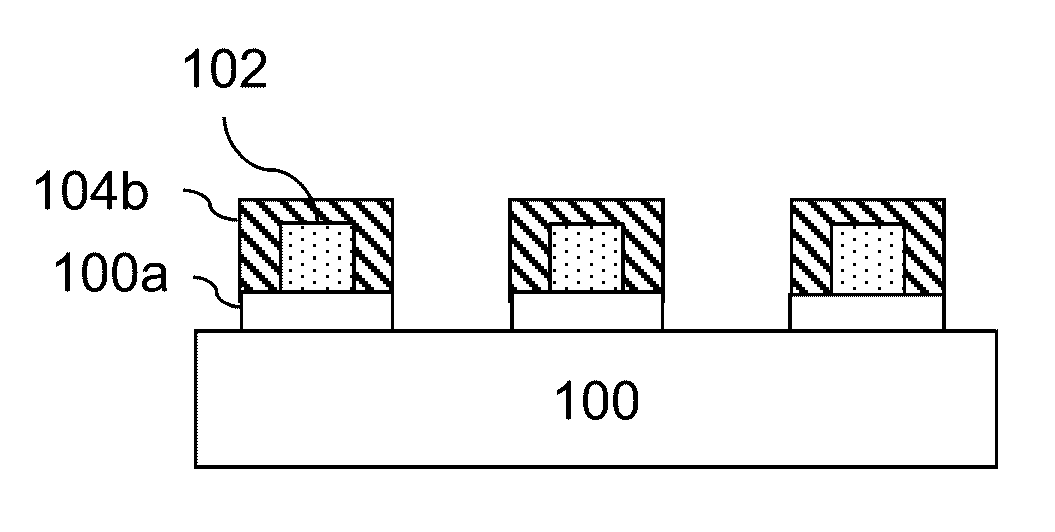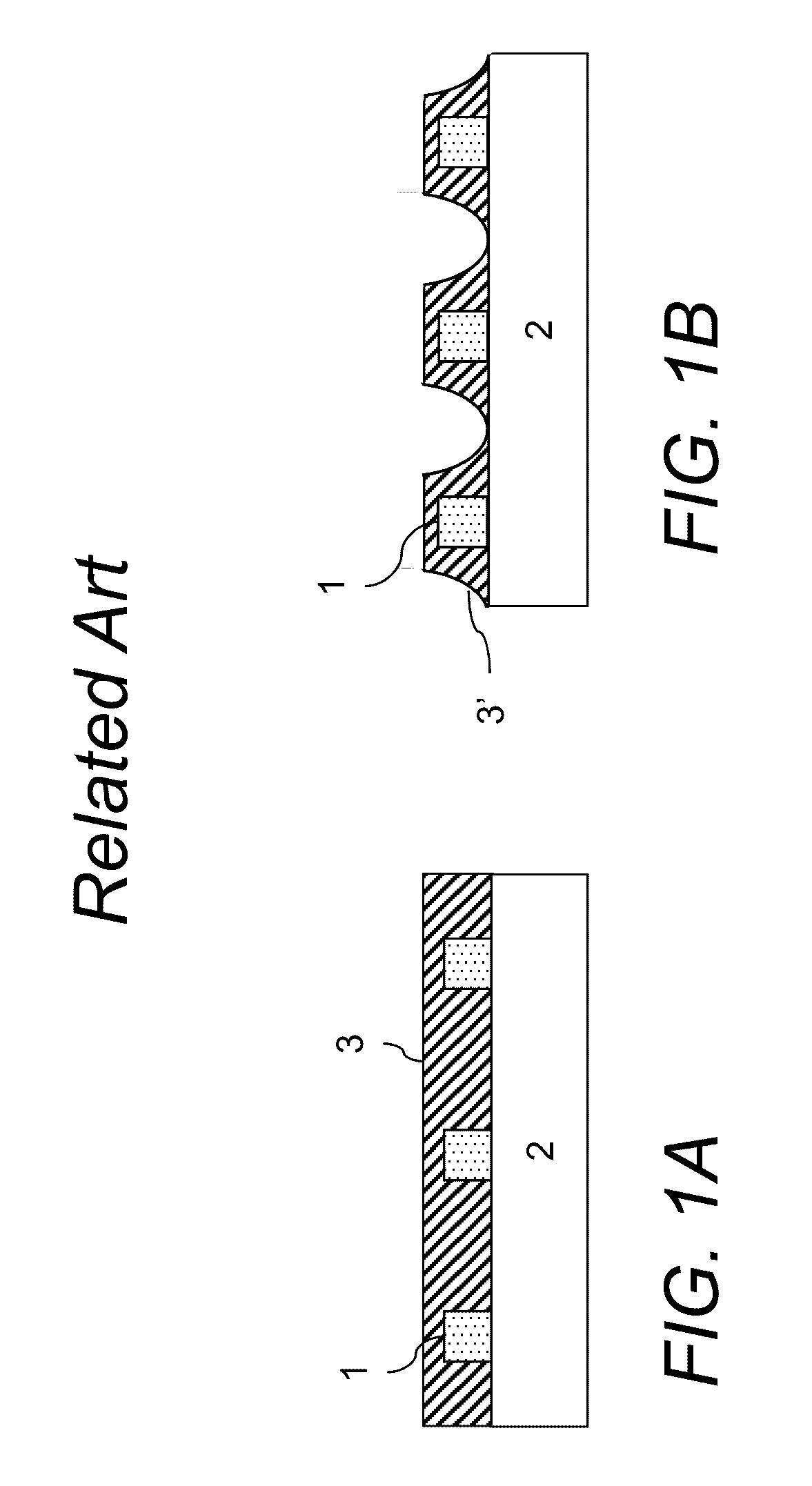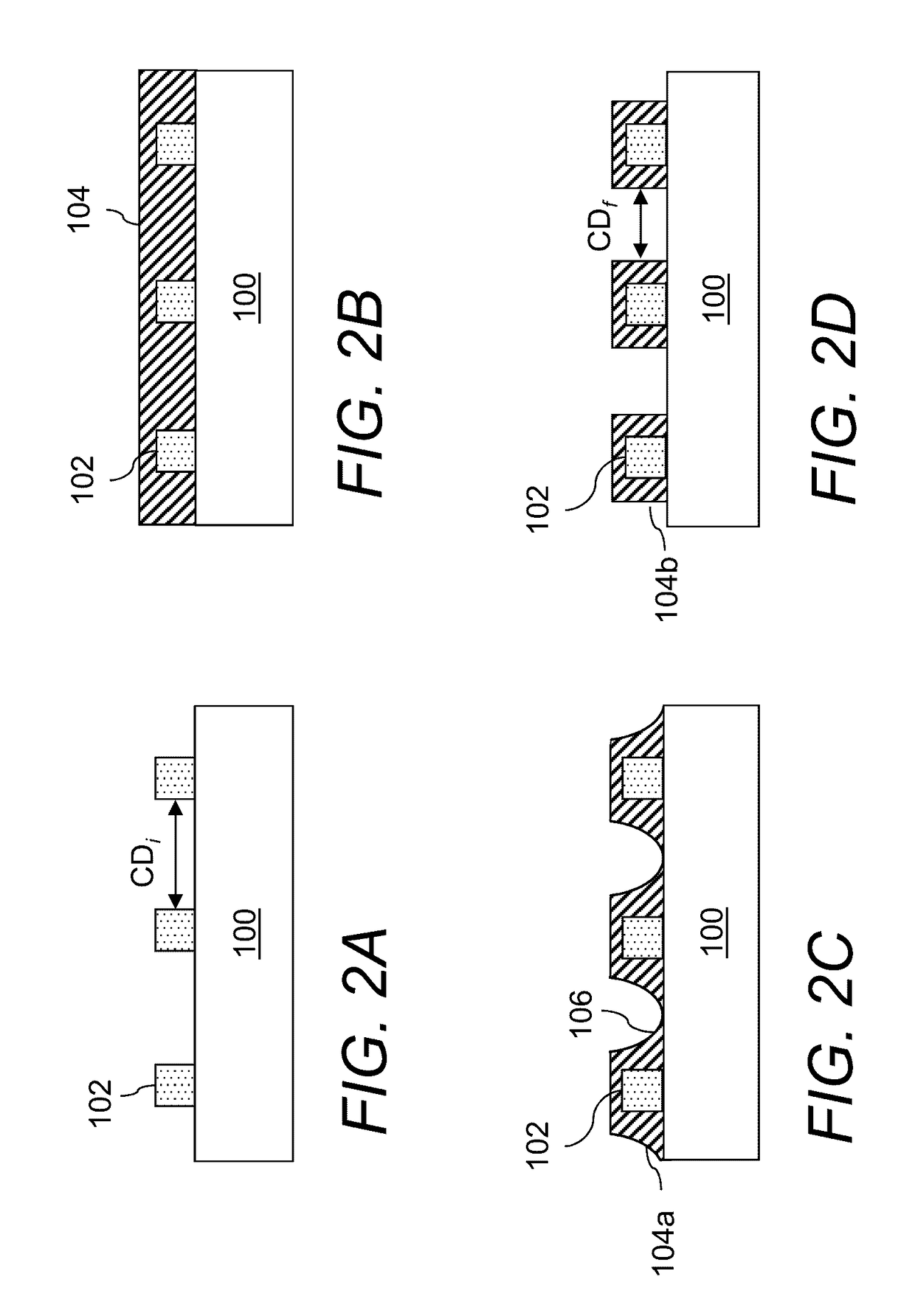Pattern treatment methods
a pattern and treatment method technology, applied in the field of pattern treatment methods, can solve the problems of inability to accurately detect patterns, add to the complexity of the process, and disadvantage in the process throughput, and achieve the effect of high resolution patterns
- Summary
- Abstract
- Description
- Claims
- Application Information
AI Technical Summary
Benefits of technology
Problems solved by technology
Method used
Image
Examples
examples
[0068]Number and weight-average molecular weights, Mn and Mw, and polydispersity (PDI) values (Mw / Mn) for the non-nitrogen-containing block polymers were measured by gel permeation chromatography (GPC) on a Waters alliance system equipped with a refractive index detector. Samples were dissolved in HPCL grade THF at a concentration of approximately 1 mg / mL and injected through four Shodex columns (KF805, KF804, KF803 and KF802). A flow rate of 1 mL / min and temperature of 35° C. were maintained. The columns were calibrated with narrow molecular weight PS standards (EasiCal PS-2 , Polymer Laboratories, Inc.). For the nitrogen-containing block on the final block copolymers, the number average molecular weights Mn were calculated based on reactant feed charges.
[0069]Top-down scanning electron micrographs were generated with a Hitachi 59380 SEM at 250 K magnification. Cross-section SEM images were generated with an Amray 1910 scanning electron microscope after sectioning the wafers. Criti...
PUM
| Property | Measurement | Unit |
|---|---|---|
| solubility | aaaaa | aaaaa |
| thickness | aaaaa | aaaaa |
| lateral dimensions | aaaaa | aaaaa |
Abstract
Description
Claims
Application Information
 Login to View More
Login to View More - R&D
- Intellectual Property
- Life Sciences
- Materials
- Tech Scout
- Unparalleled Data Quality
- Higher Quality Content
- 60% Fewer Hallucinations
Browse by: Latest US Patents, China's latest patents, Technical Efficacy Thesaurus, Application Domain, Technology Topic, Popular Technical Reports.
© 2025 PatSnap. All rights reserved.Legal|Privacy policy|Modern Slavery Act Transparency Statement|Sitemap|About US| Contact US: help@patsnap.com



